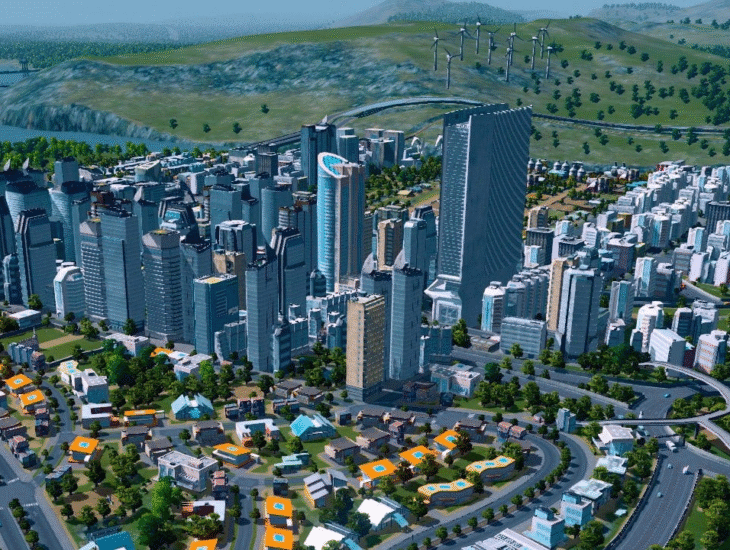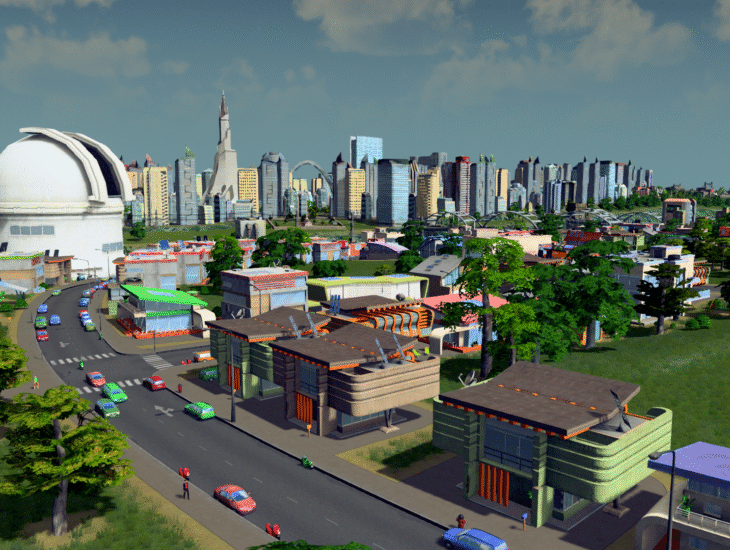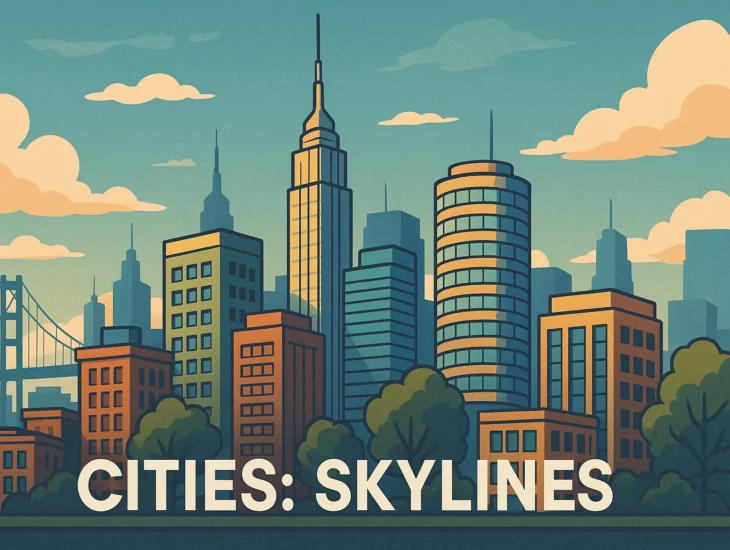Ever felt like your City Skylines metropolis is more of a sprawling mess than a thriving utopia? You’re not alone. Many players struggle to balance growth, resources, and citizen happiness.
This guide is packed with City Skylines tips to plan and grow your city effectively. We’ll cover everything from initial layout strategies to advanced traffic management, ensuring your city reaches its full potential.
Laying the Foundation: Initial Planning for Success
Starting strong is crucial. A well-thought-out initial plan sets the stage for sustainable growth and minimizes future headaches.
Choosing the Right Map
Not all maps are created equal. Consider the resources available, the terrain, and the number of highway connections.
A map with abundant resources like oil and ore can fuel your economy. Flatter terrain makes building easier and cheaper.
The Grid vs. Organic Layout Debate
The grid layout is efficient for traffic flow and zoning. However, it can look monotonous.
An organic layout is more visually appealing but requires careful planning to avoid traffic congestion. Experiment and find what works best for you.
Planning for Utilities
Water, electricity, and sewage are essential. Place water pumps upstream from sewage outlets to avoid pollution.
Consider wind direction when placing wind turbines to maximize efficiency. Plan for future expansion of these utilities.
Mastering Traffic Flow: The Lifeblood of Your City

Traffic congestion can cripple your city. Effective traffic management is essential for a thriving metropolis.
Road Hierarchy: Arterials, Collectors, and Local Roads
Establish a clear road hierarchy. Arterial roads handle high-volume traffic between districts.
Collector roads distribute traffic within districts. Local roads provide access to individual buildings.
Public Transportation: Buses, Trains, and More
Invest in public transportation early on. Buses are a cost-effective option for short distances.
Trains and metros can handle high volumes of commuters. Consider trams for medium-density areas.
Roundabouts and Interchanges: Efficient Intersections
Roundabouts can improve traffic flow at intersections. Experiment with different sizes and configurations.
Highway interchanges are crucial for connecting arterial roads. Avoid sharp turns and steep grades.
Zoning Strategies: Balancing Needs and Growth
Zoning determines the type of buildings that can be constructed in an area. Smart zoning is essential for a balanced economy and happy citizens.
Residential, Commercial, and Industrial Zones
Residential zones provide housing for your citizens. Commercial zones provide jobs and goods.
Industrial zones produce raw materials and manufactured goods. Balance these zones to meet the needs of your population.
Specialization: Focusing on Specific Industries
Specialize industrial zones to boost production and reduce pollution. Forestry, farming, and ore extraction are common specializations.
Tourism and high-tech industries can generate significant revenue. Consider specializing commercial zones as well.
Density: Low, Medium, and High
Low-density zones are ideal for suburbs. Medium-density zones offer a mix of housing and commercial opportunities.
High-density zones maximize land use in urban areas. Balance density to avoid overcrowding and traffic congestion.
Managing Finances: Keeping Your City Afloat

A healthy economy is essential for sustainable growth. Manage your finances wisely to avoid bankruptcy.
Taxes: Balancing Revenue and Citizen Happiness
Adjust tax rates to generate revenue. High taxes can make citizens unhappy and drive them away.
Experiment with different tax rates to find the sweet spot. Consider offering tax breaks to attract businesses.
Services: Education, Healthcare, and Waste Management
Provide essential services to keep your citizens happy and healthy. Education improves the workforce.
Healthcare reduces illness and death rates. Waste management prevents pollution and disease.
Budgeting: Prioritizing Spending
Prioritize spending on essential services and infrastructure. Avoid unnecessary expenses.
Monitor your budget closely and make adjustments as needed. A balanced budget is key to long-term stability.
Citizen Happiness: Keeping Your Population Content
Happy citizens are productive citizens. Address their needs and concerns to maintain a high level of happiness.
Education: A Well-Educated Workforce
Invest in education to improve the skills of your workforce. Higher education levels attract high-tech industries.
Provide enough schools and universities to meet the needs of your population. Consider libraries and museums to further enhance education.
Healthcare: A Healthy Population
Provide access to healthcare to keep your citizens healthy. Hospitals and clinics reduce illness and death rates.
Promote healthy lifestyles through parks and recreation. Consider implementing policies to reduce pollution and promote healthy eating.
Recreation: Parks, Plazas, and Entertainment
Provide ample opportunities for recreation. Parks, plazas, and entertainment venues improve citizen happiness.
Organize events and festivals to boost morale. Consider building unique landmarks and attractions to draw tourists.
Advanced Strategies: Taking Your City to the Next Level
Once you’ve mastered the basics, you can explore advanced strategies to take your city to the next level.
Districts and Policies: Fine-Tuning Your City
Use districts to implement specific policies in different areas. Encourage cycling, reduce traffic, or promote tourism.
Experiment with different policies to optimize your city’s performance. Consider implementing policies to reduce pollution and conserve resources.
Mods and Assets: Expanding Your Options
Mods and assets can significantly expand your options. Add new buildings, vehicles, and features to the game.
Be careful when using mods, as they can sometimes cause conflicts or instability. Research mods thoroughly before installing them.
Public Transport Optimization
Optimize public transport routes based on demand. Adjust bus and train schedules to match peak hours.
Consider implementing dedicated bus lanes and train tracks. Use the metro system to relieve congestion in dense areas.
Conclusion
Mastering City Skylines takes time and practice, but with the City Skylines tips to plan and grow your city outlined above, you’ll be well on your way to building a thriving metropolis. Remember to experiment, adapt, and most importantly, have fun! What are your favorite City Skylines tips? Share them in the comments below!
FAQ Section
Here are some frequently asked questions about City Skylines.
Q: How do I reduce traffic congestion in City Skylines?
A: Implement a clear road hierarchy, invest in public transportation, and use roundabouts and interchanges to improve traffic flow. Consider implementing traffic management policies and encouraging cycling and walking.
Q: How do I increase citizen happiness in City Skylines?
A: Provide access to education, healthcare, and recreation. Reduce pollution and crime rates. Address their needs and concerns through effective policies and services.
Q: How do I balance my city’s budget in City Skylines?
A: Adjust tax rates, prioritize spending on essential services and infrastructure, and avoid unnecessary expenses. Monitor your budget closely and make adjustments as needed.










